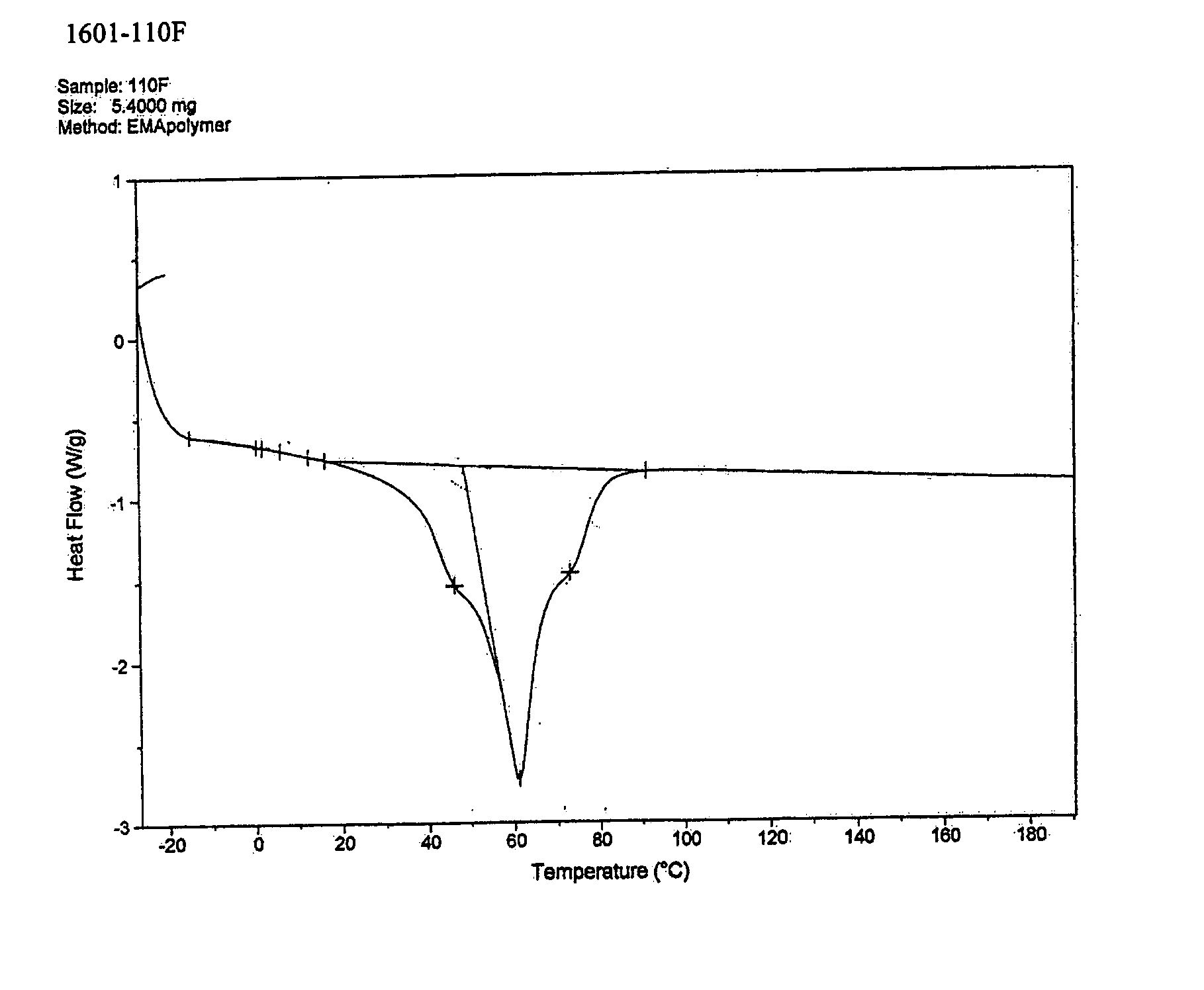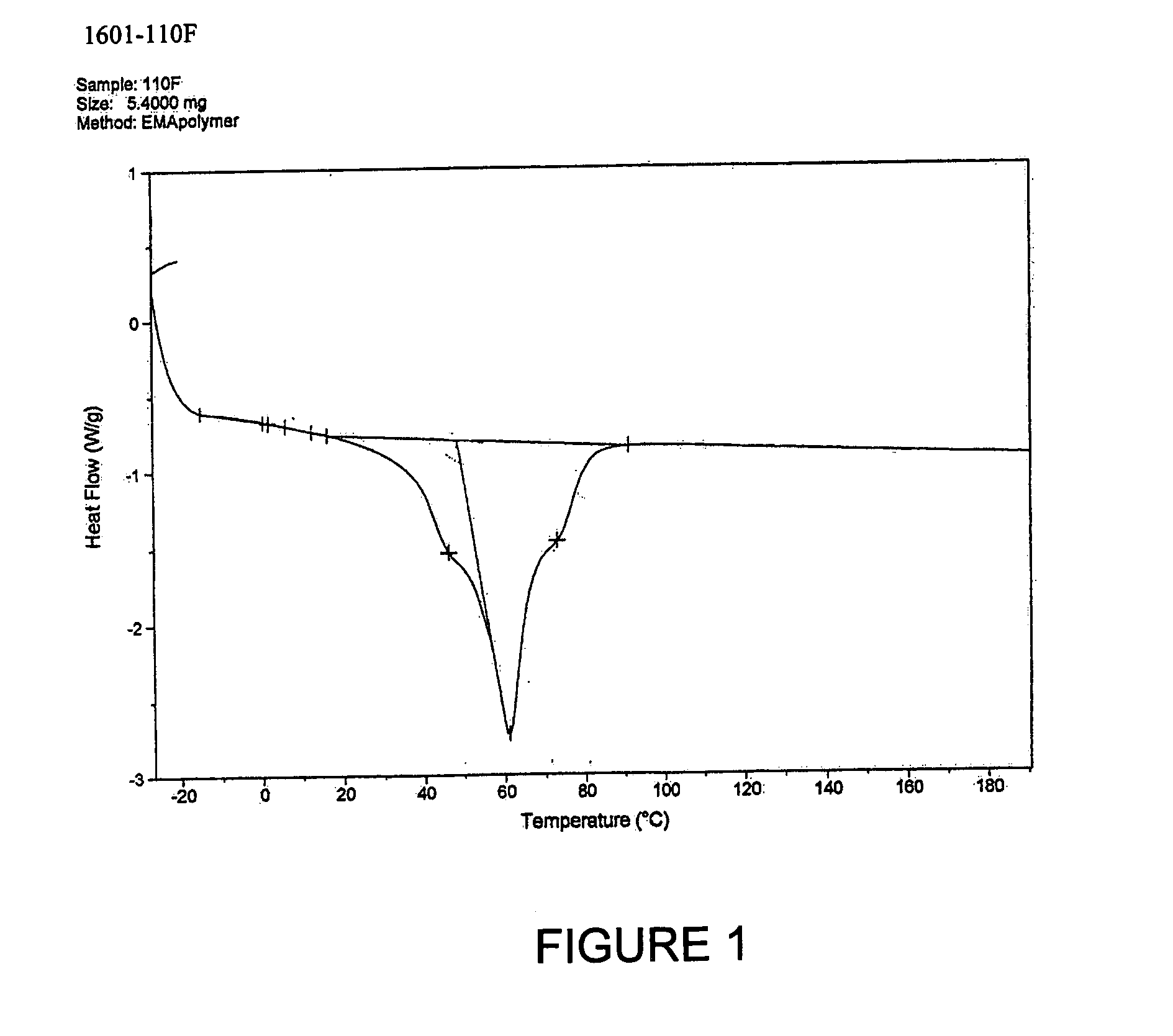Process for packaging plastic materials like hot melt adhesives
a technology of plastic materials and hot melt adhesives, applied in the field of packaging plastic materials, can solve the problems of difficult handling and/or packaging of materials, presenting a multiplicity of additional difficulties, dirt and other contaminants, etc., and achieve the effect of eliminating any waste packaging problems
- Summary
- Abstract
- Description
- Claims
- Application Information
AI Technical Summary
Benefits of technology
Problems solved by technology
Method used
Image
Examples
example 1
[0185] Tables 1a and 1b illustrate 19 different compositions suitable for use as the polymeric outer film. Each formulation in Tables 1a and 1b had an elongation value at break of greater than 100%, and a melting capacity greater than 100 J / g. Each formulation also had excellent migration resistance because they had little or no tack, little or no staining and were non-blocking under the test conditions described.
example 2
[0186] Tables 2a and 2b illustrate 15 different compositions that are unsuitable for use as the polymeric outer film. The formulations in Tables 2a and 2b were all unsuitable because they did not pass one or more of the elongation, melting capacity or migration resistance tests. In other words, each formulation in Tables 2a and 2b have one or more characteristic resulting in the composition having an elongation value at break of less than 100%, a melting capacity of less than 100 J / g, or poor migration resistance as evidenced by excessive tack and / or staining.
example 3
[0187] Tables 3a and 3b illustrate a comparison of the ingredients of various formulations and the test data obtained with regard to suitable formulas for the outer film and unsuitable formulas based on DSC data and on migration resistance at 50° C. Also, FIGS. 1 and 2 illustrate the DSC curves for two acceptable compositions while FIGS. 3 and 4 illustrate the DSC curves for two unacceptable compositions. FIG. 1 illustrates heat flow versus temperature for formulation 1601-110F from which its enthalpy of fusion is measured to be 117 Joules / gram. FIG. 2 illustrates heat flow versus temperature for formulation 1601-155E from which its enthalpy of fusion is measured to be 109 Joules / gram. FIG. 3 illustrates heat flow versus temperature for formulation 1600-00B from which its enthalpy of fusion is measured to be 87 Joules / gram. Finally, FIG. 4 illustrates heat flow versus temperature for formulation 1601-156B from which its enthalpy of fusion is measured to be 73 Joules / gram. Reference ...
PUM
| Property | Measurement | Unit |
|---|---|---|
| Temperature | aaaaa | aaaaa |
| Temperature | aaaaa | aaaaa |
| Temperature | aaaaa | aaaaa |
Abstract
Description
Claims
Application Information
 Login to View More
Login to View More - R&D
- Intellectual Property
- Life Sciences
- Materials
- Tech Scout
- Unparalleled Data Quality
- Higher Quality Content
- 60% Fewer Hallucinations
Browse by: Latest US Patents, China's latest patents, Technical Efficacy Thesaurus, Application Domain, Technology Topic, Popular Technical Reports.
© 2025 PatSnap. All rights reserved.Legal|Privacy policy|Modern Slavery Act Transparency Statement|Sitemap|About US| Contact US: help@patsnap.com



